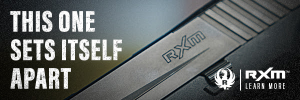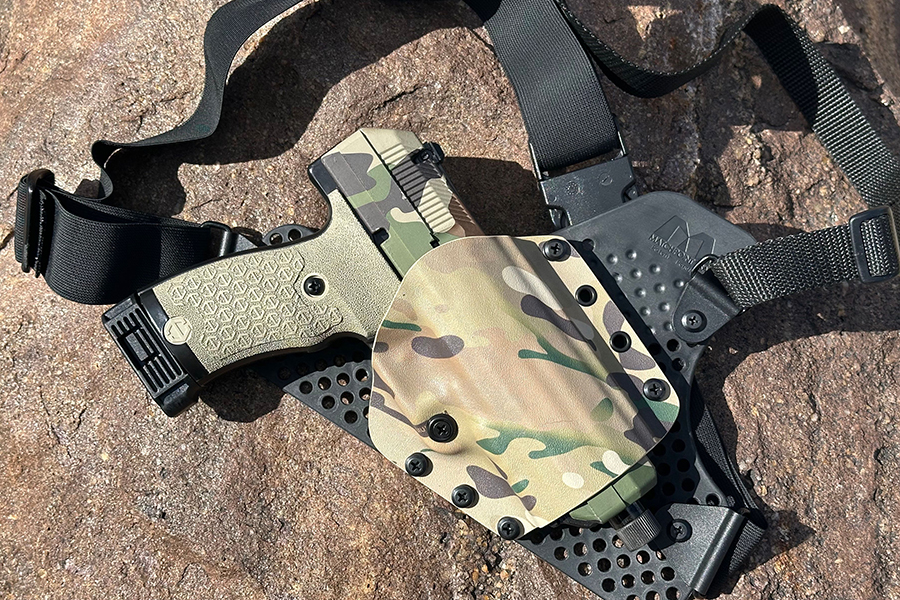
It has become a bit of a game for gun media folks to figure out which old idea is going to be presented as new when the SHOT Show opens each year. Case in point, the .380 ACP boom of a few years ago. Then, almost out of nowhere, it seemed like every gun company was making a lever action rifle.
“What has been will be again, what has been done will be done again; there is nothing new under the sun.” Ecclesiastes 1:9. It’s not a stretch to imagine that King Solomon was prophesying the future of the firearms industry. At least that’s how I felt a few years ago when pistols chambering the 10mm Auto started popping up after a long hiatus.
10mm Auto History in America
Firearms historians credit the late Colonel Jeff Cooper, founder of the Gunsite Academy, as the person who lit the flame under the 10mm Auto cartridge and rightly so. The Bren Ten was the brainchild of firearms maker Dornaus & Dixon with heavy input from the Colonel. Norma Ammunition is credited for creating and releasing the cartridge in 1983 with Jeff Cooper’s guidance and input.
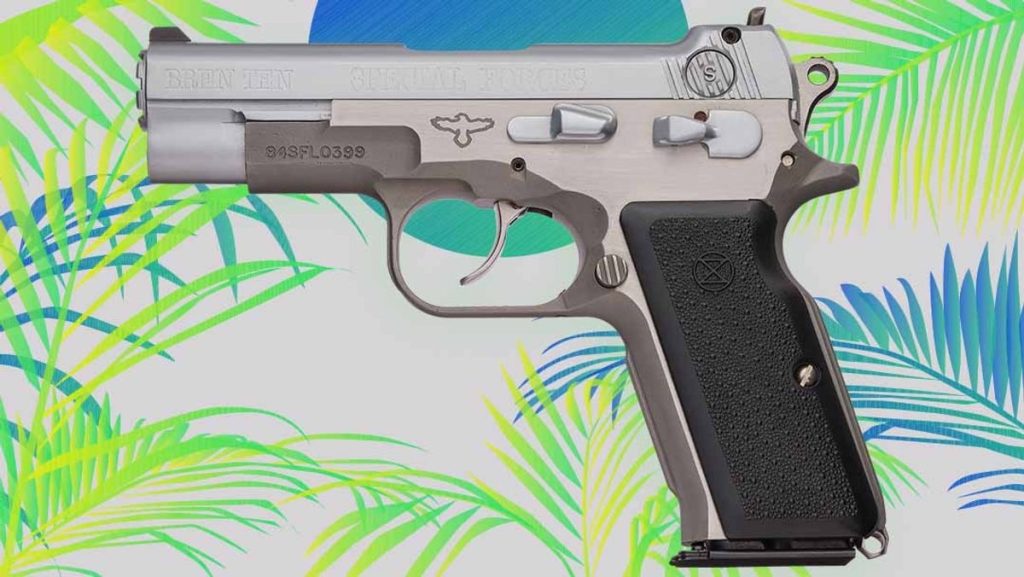
For its part, the Bren Ten was a bit of an odd bird, taking design tips from the CZ-75. The guns were heavy steel pistols weighing 38 ounces or 2.3 pounds. Despite the Cooper endorsement, the Bren Ten was plagued with production issues and only about 1500 were ever built. Rumor has it that spare magazines were $100 a pop in the 80s! Even Don Johnson wielding the Bren Ten during the first season of Miami Vice could not save the pistol.
Just because the Bren Ten was dead did not mean the 10mm Auto cartridge was going away. I can recall walking into my favorite gun shop in Jacksonville, Florida in 1988 and checking out a deep blue, almost black, Colt Delta Elite with the signature red triangle on the grips. Of course at the time I was a young PFC in the Marine Corps and such a gun was beyond my budget, but I could dream.
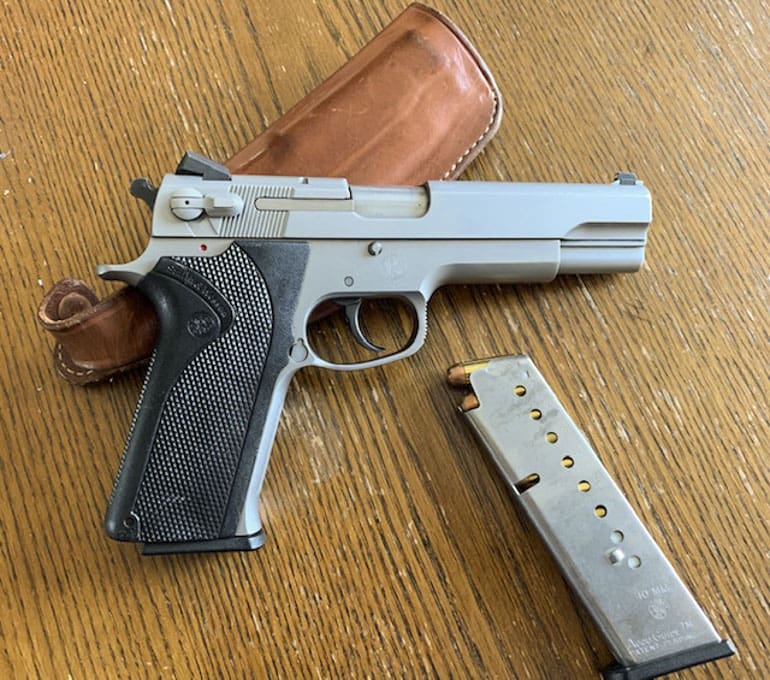
A few years later, during the police academy, one of my classmates brought a new S&W 1006 to the range in 10mm and I was able to shoot it a bit. Remember, it was the S&W 1076 (frame mounted de-cocker) that was supposed to be the FBI’s answer to the 1986 Miami Shootout where two agents were killed and five injured during the famous gun battle. In their after-action report, the FBI largely blamed the 9mm Winchester Silvertip Hollow Point for failing to stop Michael Platt sooner. As so, their answer was a more powerful pistol.
By the mid-90s, just about every major handgun maker was producing some form of 10mm Auto handgun. GLOCK introduced their ubiquitous G20 in that chambering. In a hat tip to GLOCK, while most every maker of 10mm handguns discontinued them after a relatively short time, the Austrian gunmaker has kept them in their catalog and expanded their 10mm line over the years.
After flirting with the 10mm Auto, the FBI found that the pistols were too large and too powerful for their average agent to carry and fire. We all know what happened next, the. 40 Smith & Wesson cartridge was born.
With the Global War on Terror in full effect and the Clinton Era gun ban expired, the military and the American civilian market wanted high-capacity 9mm pistols and the police wanted .40 S&W pistols. The bloom was off the rose and the 10mm cartridge was pushed into the shadows. What 10mm pistols there were, gathered dust, but for a few dedicated purists and experienced shooters who still embraced them.
10mm in the 21st Century
While the 10mm Auto closed out the 20th Century on a downturn, the 21st Century has seen it rise from the ashes like the proverbial phoenix. Industry insiders credit two main reasons for this, 1) the death of the .40 S&W cartridge left ammo makers with 100 million unloaded 10mm bullets and they needed to use those projectiles and 2) a brand new generation of gun buyers had come of age and none of them had any experience with the 10mm Auto. Heck, I have overheard younger buyers refer to these as, “Those new 10mm pistols.”
At press time, Smith & Wesson, Glock, Kimber, Tisas, Tanfoglio, SIG, Taurus, CZ-USA, Iver Johnson, Kriss USA, Girsan, FN, Colt, Ruger, Dan Wesson and freakin’ Hi-Point all have at least one, and some have numerous models of 10mm Auto handguns in production. Ruger and Smith & Wesson have double-action revolvers. I did not even add up the number of “pistol caliber carbines”. Ten years ago you could have counted the number of current production 10mm pistols on one hand.
10mm Auto Pistol Buyers
As for the reasons people give for purchasing a 10mm Auto handgun, they are varied. Naturally, a big reason that people buy a 10mm is because they have never had one and are curious or they want to be the first one in their friend group to get one.
Of the cool factor crowd, a few might plan to compete with them, but most simply shoot for the experience. A good many will make plans or declarations that they will by loading their 10mm pistol for personal or home defense.
Out west in the Rocky Mountain region of the county, there is a much different class of gun carrier than the one found in the suburbs of the midwest or eastern United States. In the mountains, people carry “bear guns”, or should I say, the people who live here carry bear guns. The granola-munching, summertime tourists carry “bear spray.”
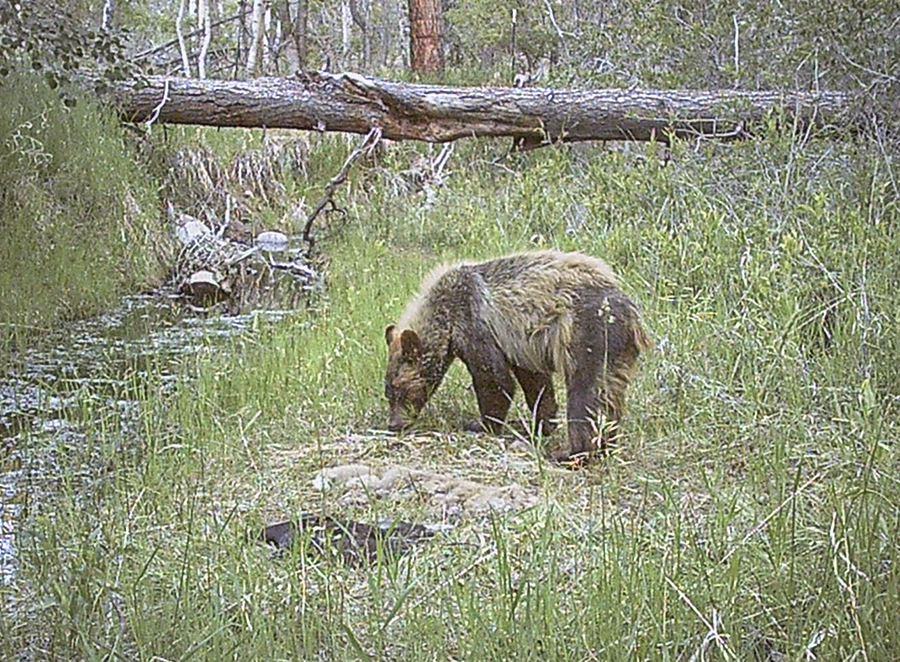
Elmer Keith realized the value of having a powerful handgun as a defensive tool against aggressive bears and it has been 80-90 years since he used his experience in bear country to convince Smith & Wesson and Remington to turn their “Special” cartridges into “Magnum” cartridges.
In the 21st Century, those who carry handguns as defensive tools in bear country are divided into two main camps; .44 Magnum revolver or 10mm Auto pistol. As you can imagine the older purists lean toward the wheelgun, while the younger crowd chooses the autoloading handgun.
For those who wish to just “shoot” or “practice” with their 10mm Auto, the obvious and economical answer is some type of FMJ load. The 180 grain FMJ has been the standard weight practice or training load for the 10mm going back to the beginning.
Loads for Personal Defense
When it comes to using the 10mm for self-defense, we must consider both the two-legged and four-legged predators. About a month ago, I was listening to a friend who happens to be not only a GWoT veteran, but was the team leader for a US Army sniper element. “Of all the animals on Earth that I have killed, humans are the easiest to make die,” he commented.
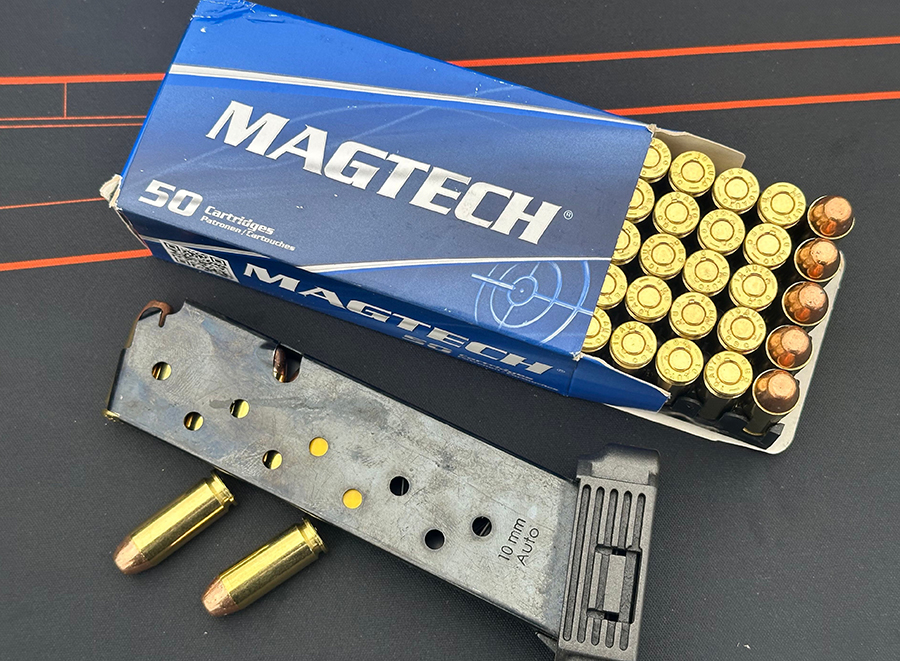
He went on to elaborate, “Most humans are predisposed to lay down and die when they have been shot. Wild animals on the other hand, don’t know they are supposed to die when you shoot them. They keep going unless the damage from the bullet stops them from doing so.” I thought that was a rather profound statement and one worth relating.
For years, we at Student of the Gun have told our students that there are 3 Types of Attackers when it comes to using a firearm for self-defense. A Type 1 Attacker will see the gun and, not wanting to get shot, surrender or flee. The Type 2 Attacker will not surrender, submit, or flee until they have sustained an injury, even a non-life threatening one. The injury is what makes them change their mind. Lastly, a Type 3 Attacker will not stop, flee, or submit until their body has sustained physical damage to the point where they can no longer attack.
The Type 1 and Type 2 “stops” are psychological, the attacker made the mental decision to stop attacking you. A Type 3 is physiological, they only stop because they cannot make their body keep attacking you. When a bear decides that it is going to make you dinner, that is a Type 3 attacker. It will not stop until its body stops responding to the commands from its brain.
Human attackers are what we would call thin-skinned animals, to stop them, a good choice is a projectile that penetrates and makes a big wound cavity. For a dangerous predator like a bear, your bullet will need to get deep inside or break through their thick skulls.
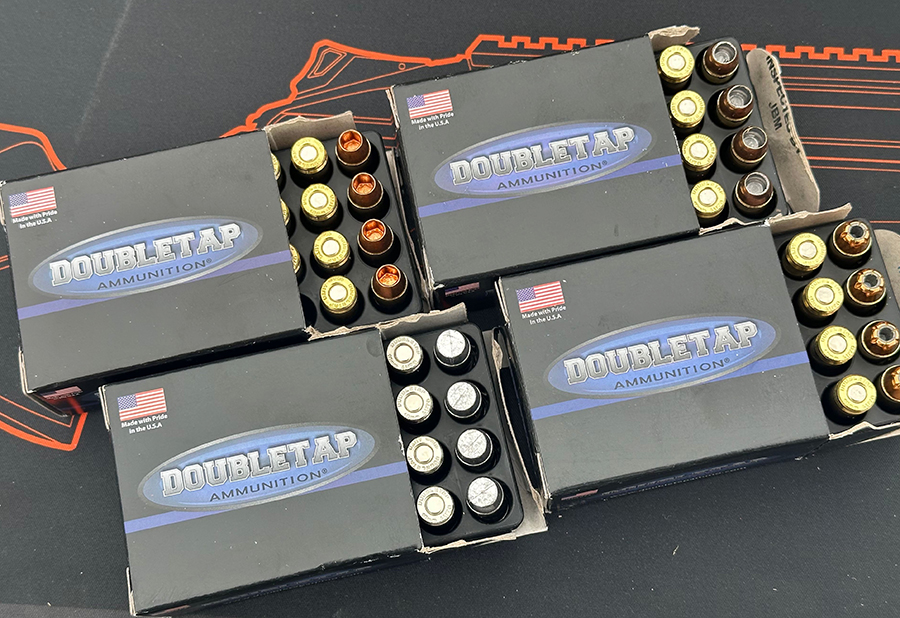
DoubleTap Ammunition makes a wide variety of 10mm Auto ammunition, recently I was able to test out a varied sampling. From the DoubleTap catalog, you can choose from light and super fast to heavy and hard hitting. For my testing I had their 125 grain all copper, hollow point that screams out of a 5 inch barrel at 1600 FPS! Then I had a more traditional 180 grain jacketed hollow point at 1300 FPS. That was followed by a unique load that DoubleTap calls the “Snake Shot Defense”. This round uses a 135 grain JHP bullet filled with 140ct #9 shot for a total weight of 205 grains. Ouch! Lastly, I fired a 200 grain Hardcast Lead solid bullet exiting the muzzle at 1300 FPS. That projectile is loaded into nickel cases.
Regarding the threat of two-legged predators, any of the first three loads on the list should give you the kind of penetration and massive wound cavity that you are looking for to stop a lethal attacker. Just put the bullets where they are supposed to go.
When it comes to dangerous game, I have consulted with men who have killed such animals both in North America and Africa. Hard-hitting bullets that penetrate deep have always been their recommendations. Were I to load up a bear gun as a defensive arm, it would be the 200 grain Hardcast Lead bullet load that, not just I but, professional hunters recommend.
The choice is yours. Pick your favorite 10mm pistol, train, practice and load it for the job at hand.

